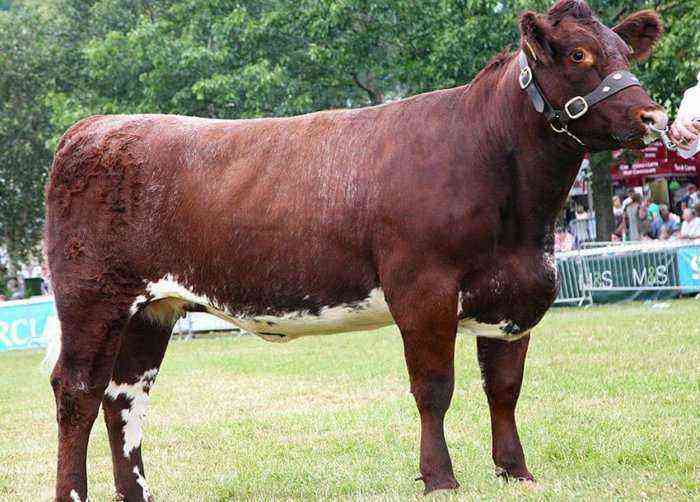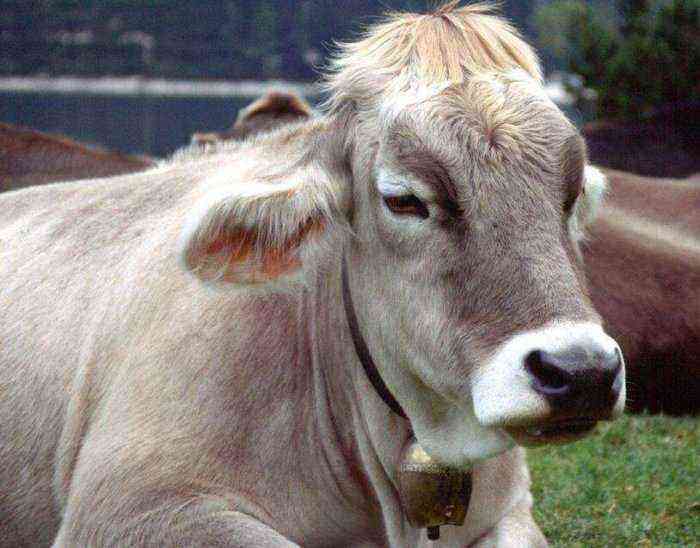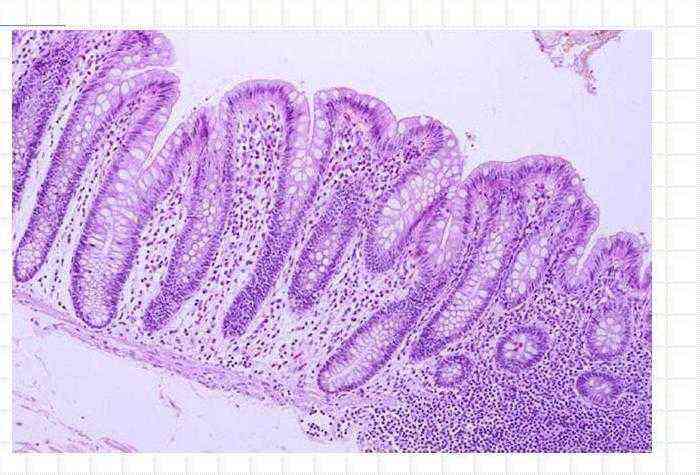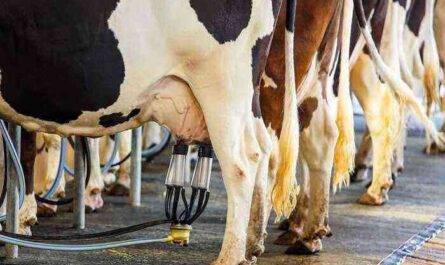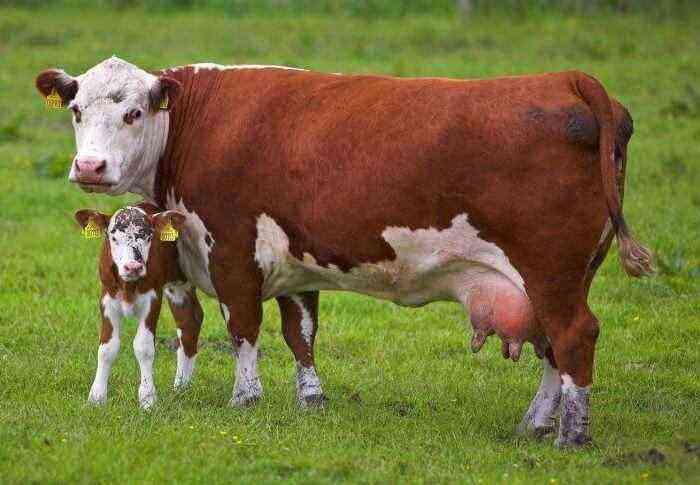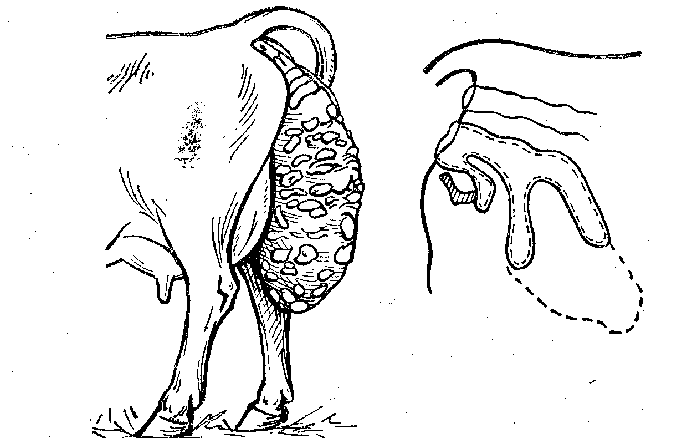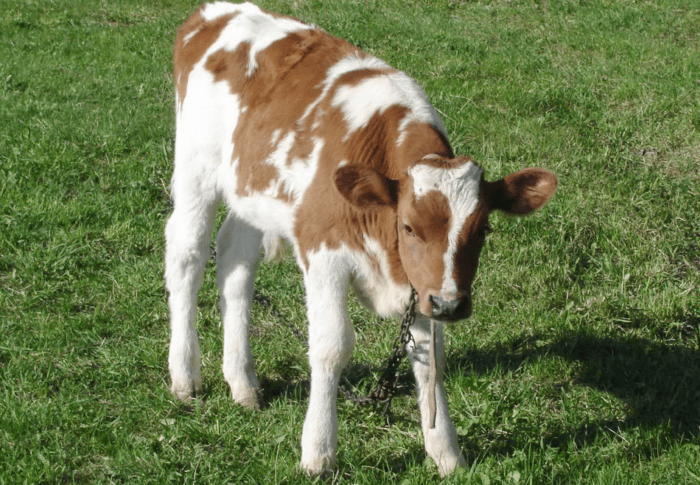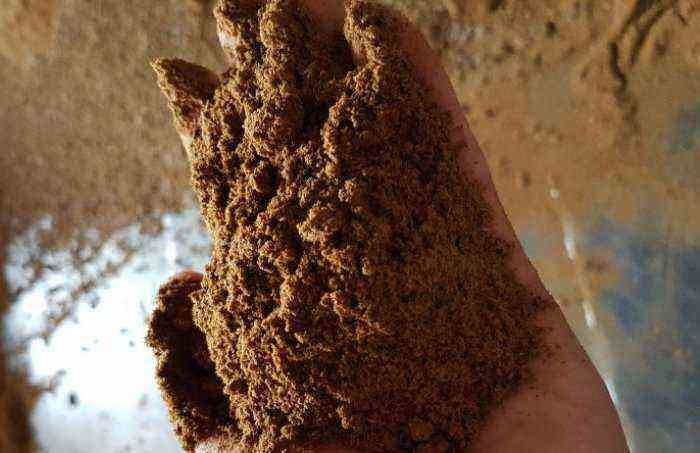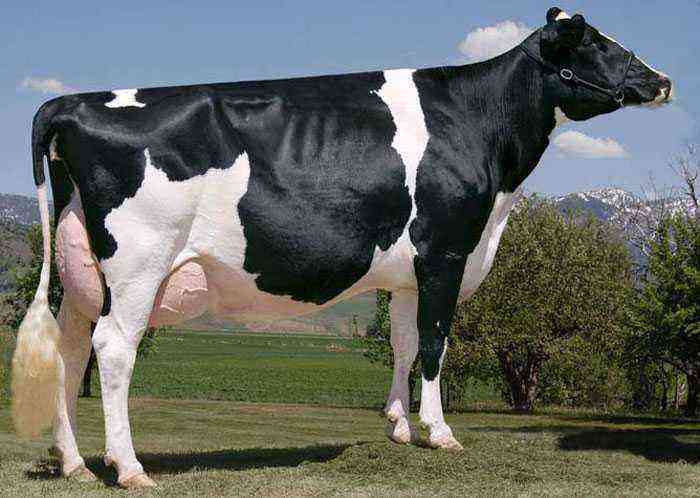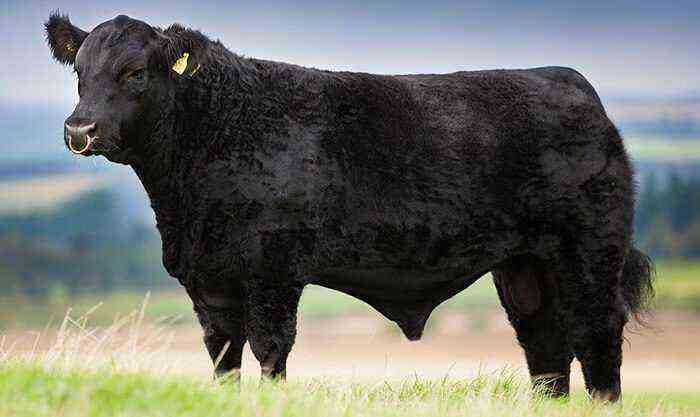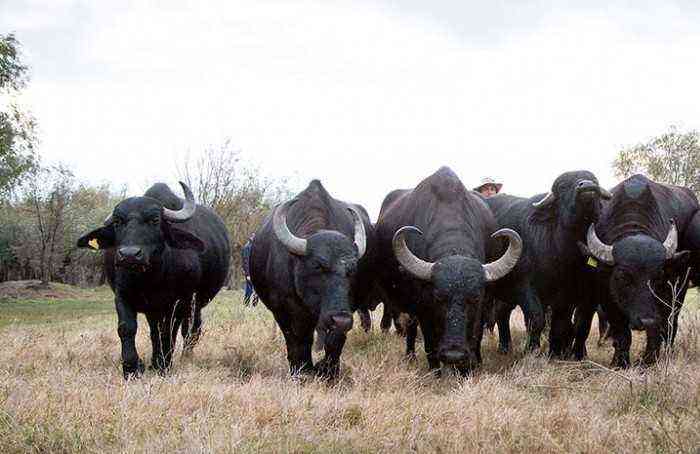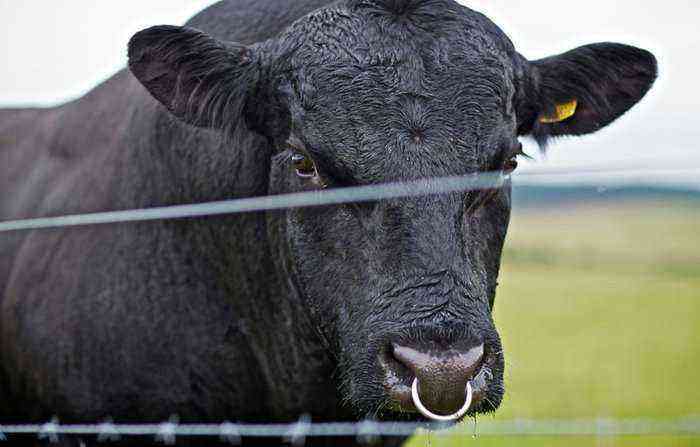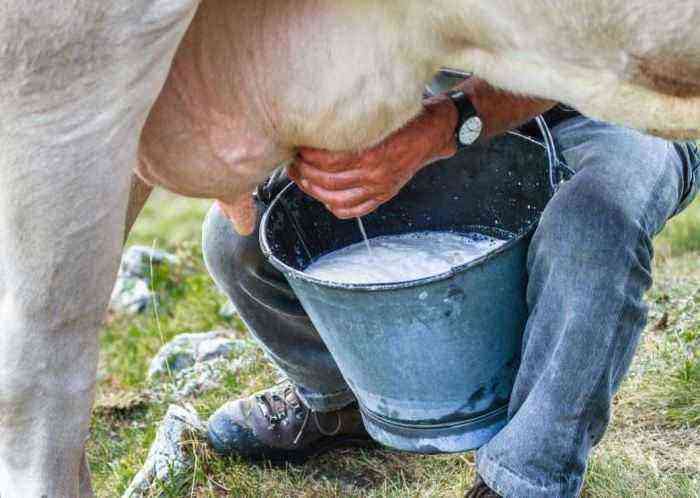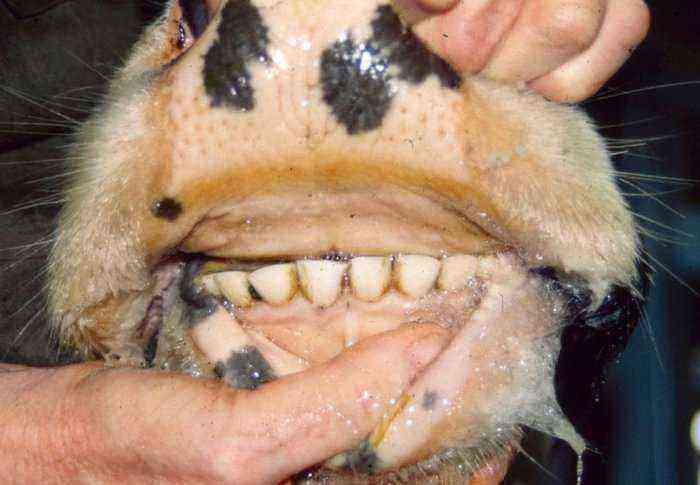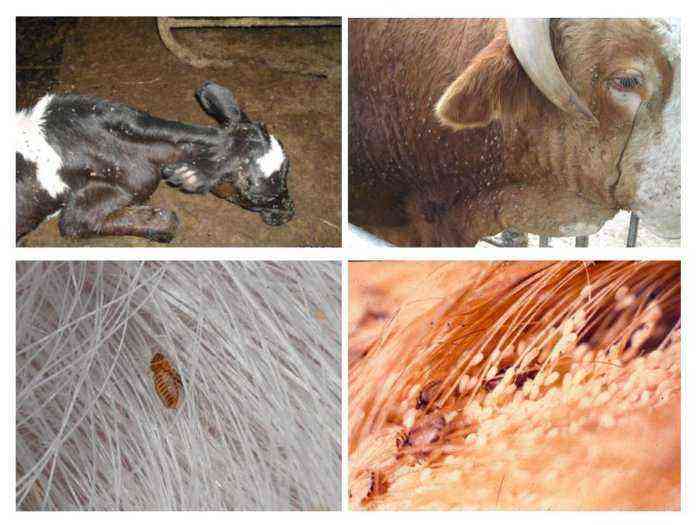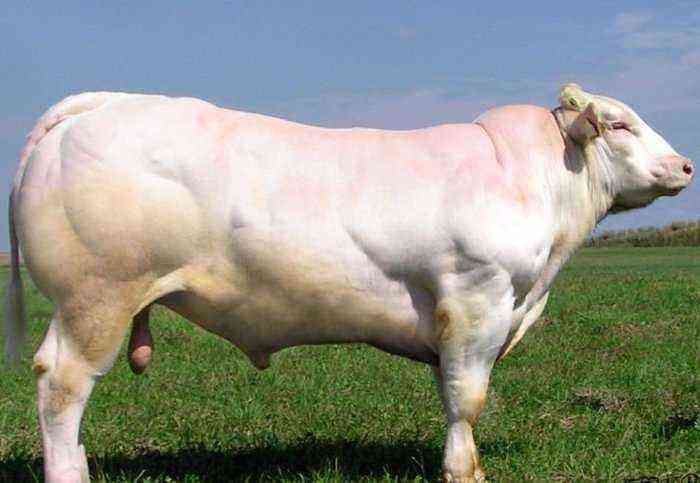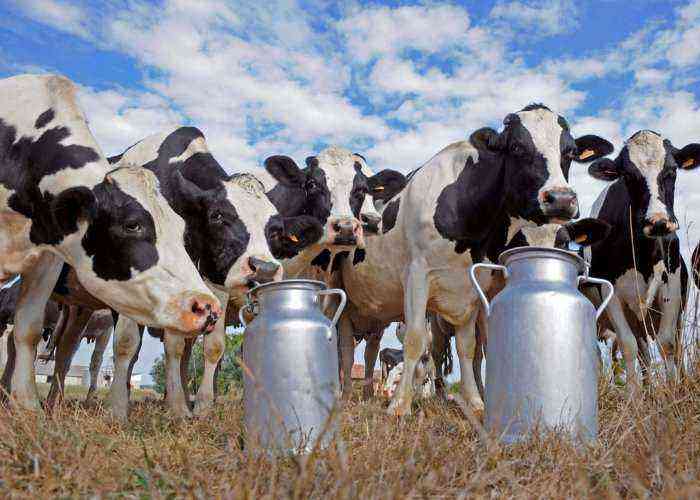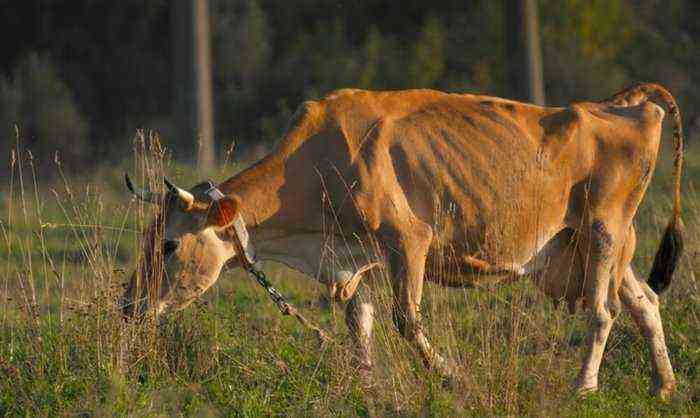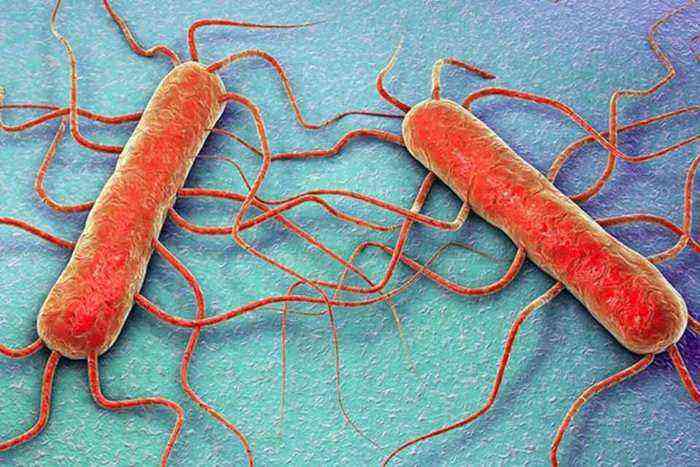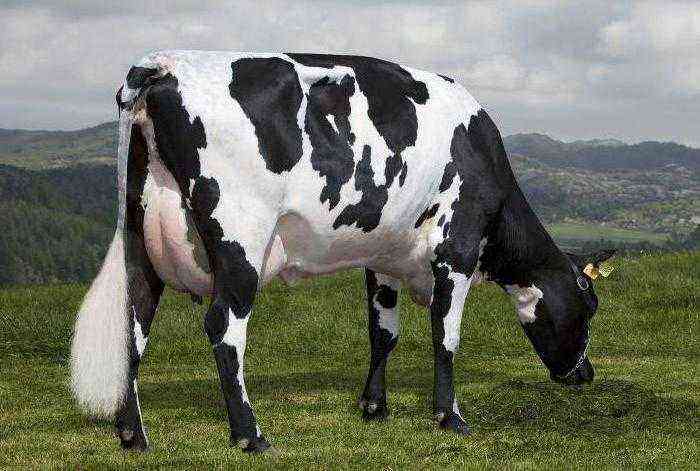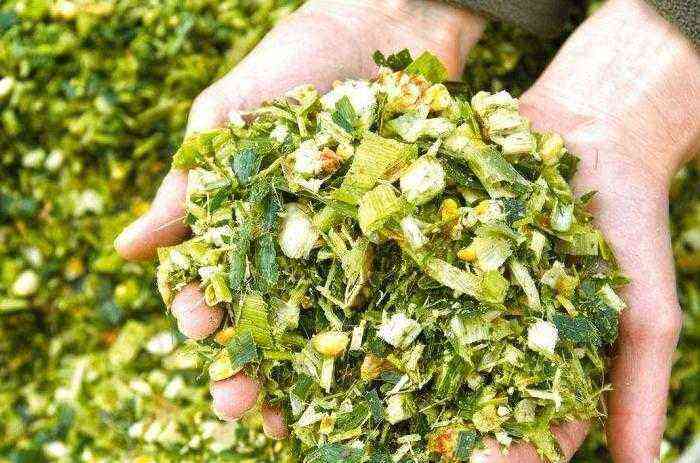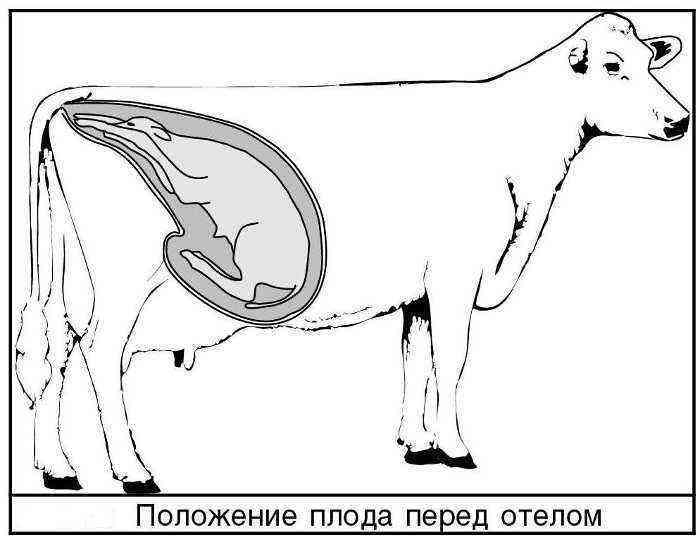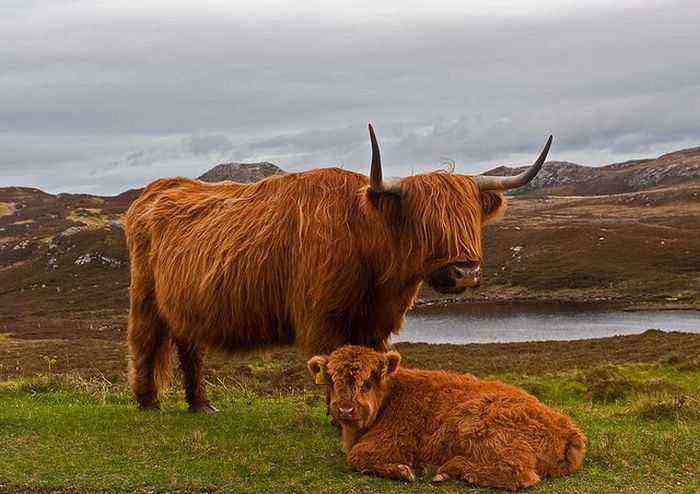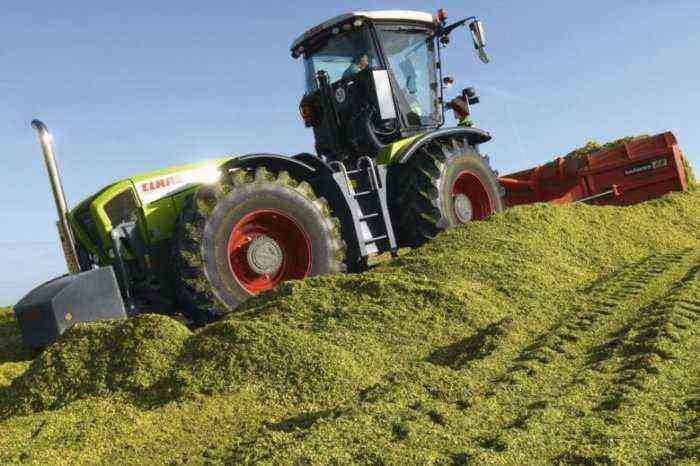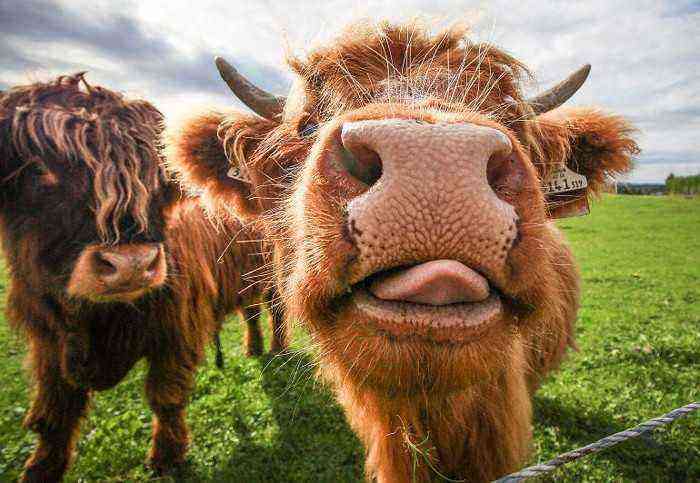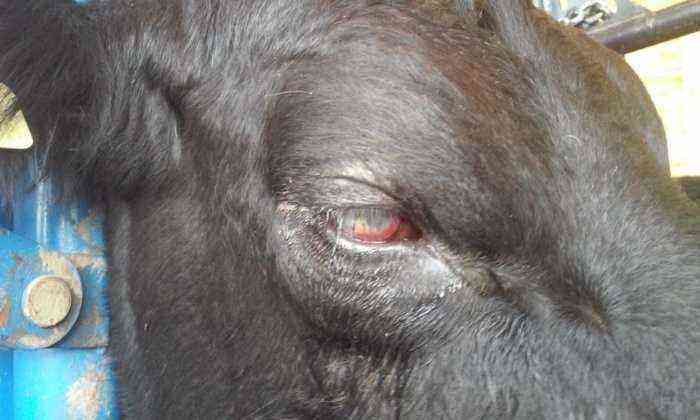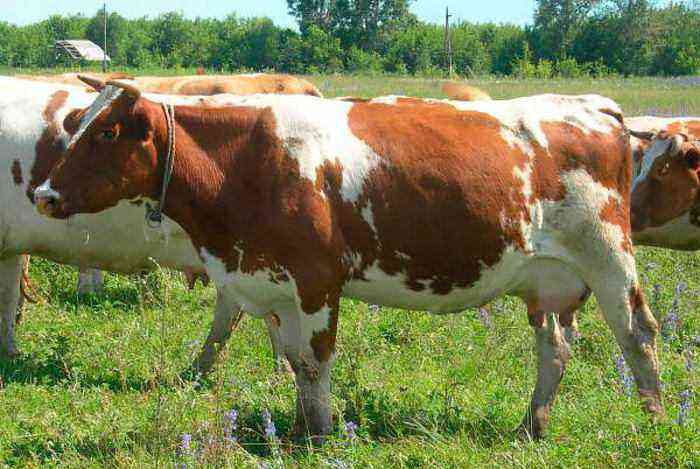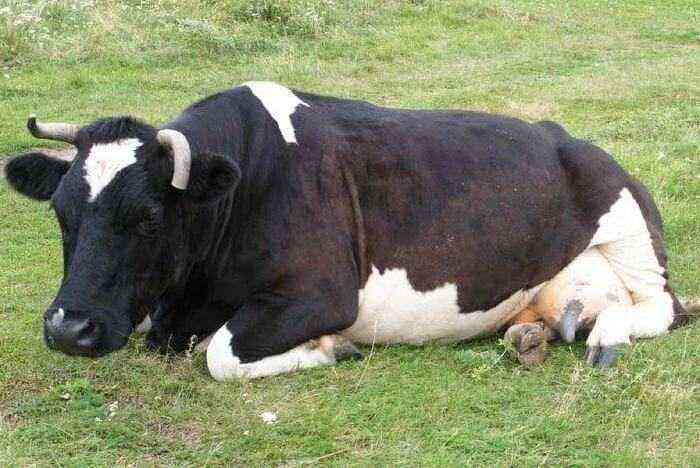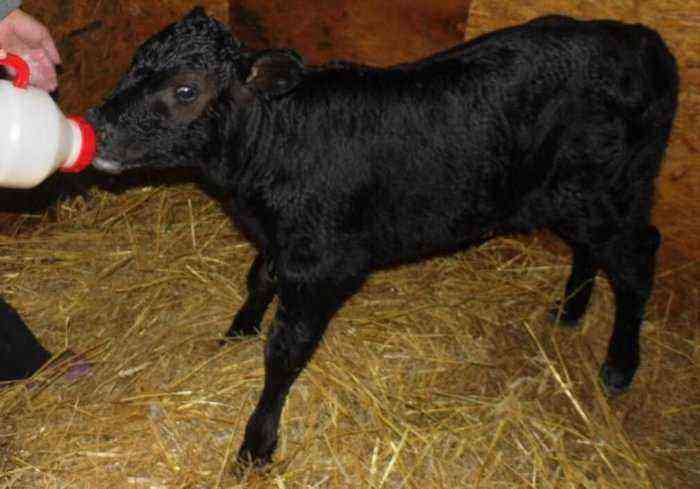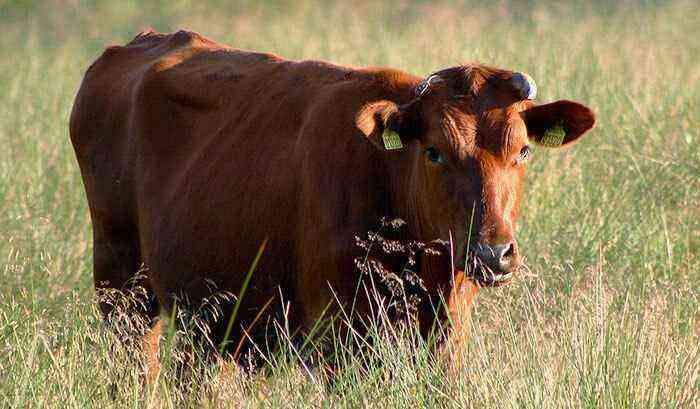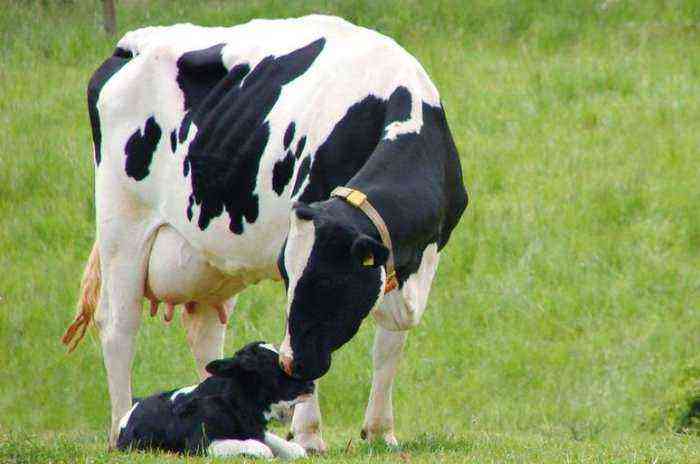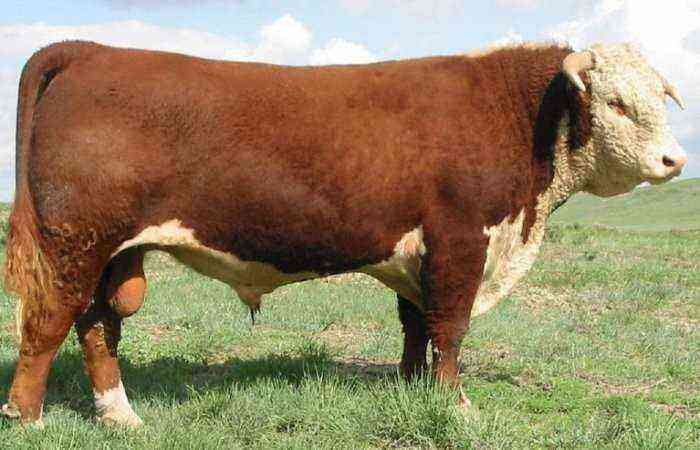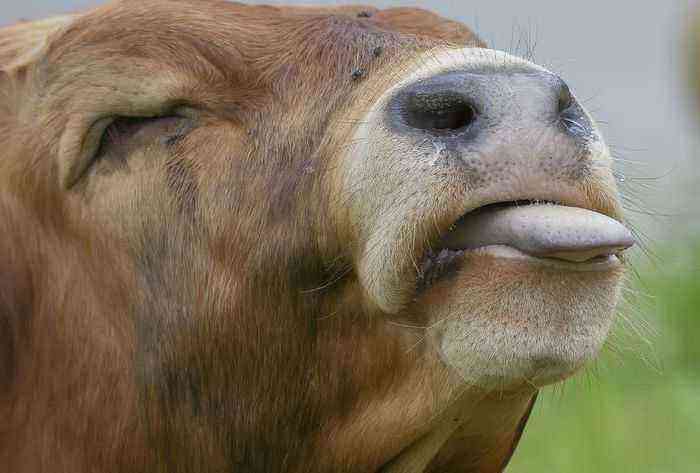Corolla phlegmon in a cow is a purulent inflammation of the subcutaneous tissue of the corolla, usually resulting from a hoof injury. This disease in animals is quite common, so farmers need to constantly inspect the limbs of animals for microtrauma. With timely treatment, the prognosis is favorable. Ignoring the inflammatory process often leads to serious complications – necrosis of adjacent tissues or even sepsis.
cow whisk
Causes
The main reason for the development of the inflammatory process in the tissues of the corolla is always a decrease in the immunity of the animal. When a hoof is injured and an infection gets inside, a weakened body is not able to cope with foreign microorganisms. As a result, bacteria multiply and severe inflammation occurs. What conditions cause the development of the disease, we will consider further:
- Hoof injury resulting from grazing an animal – bruises, abrasions, punctures.
- Ulcers formed in foot-and-mouth disease.
- Inflammation of the joint, accompanied by suppuration.
- Purulent pododermatitis.
Reference. The causative agents of the disease are bacteria – staphylococci, streptococci and E. coli.
Symptoms
Corolla phlegmon is usually accompanied by severe pain in the hoof area, so lameness is always the first sign of the disease. The cow prefers to lie down, and if it gets up, it tries to gently step on the disturbing limb. On visual examination, there is swelling in the interhoof gap and a slight detachment of the edge of the corolla. At this stage of the disease, body temperature remains within the normal range. Further development of the inflammatory process is accompanied by the following symptoms:
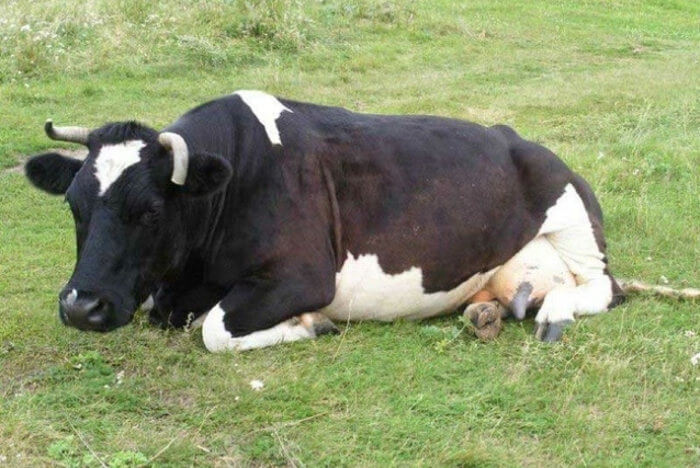
Poor appetite in a cow as a symptom
- The animal is oppressed.
- Eating badly.
- Yield is decreasing.
- The temperature rises by 1-1,5 degrees.
- When pressing on the hoof and nearby tissues, the animal is worried, mooing plaintively.
- The swelling in the area of the corolla gradually increases, hanging over the horny wall.
- Slightly above the focus of inflammation, after 5-7 days, a brown exudate with purulent inclusions begins to stand out.
If you do not start treatment on time, there is a high probability of developing tissue necrosis. In this case, the discharge from the focus of inflammation will change its character – they will become bloody, and ulcerations will appear in place of the torn off tissues.
Diagnosis of the disease
After a visual inspection of the cow, the veterinarian usually understands that he is dealing with corolla cellulitis. However, in some cases, a blood test may be necessary. With this disease, as with most purulent processes, the leukocyte formula shifts to the left.
When making a diagnosis, it is important to identify the cause of the disease. If this ailment is a complication of another disease, then the treatment regimen differs from the usual one. First of all, the efforts of the veterinarian will be aimed at combating the underlying disease.
Treatment
The treatment regimen for corolla phlegmon in cows depends on the degree of spread of the infection and the stage of the inflammatory process. If the infection has not yet had time to cause severe suppuration and has not affected the nearby tissues of the hoof, then the treatment will be aimed at stopping the development of the inflammatory process and limiting it. For this, the following measures are taken:
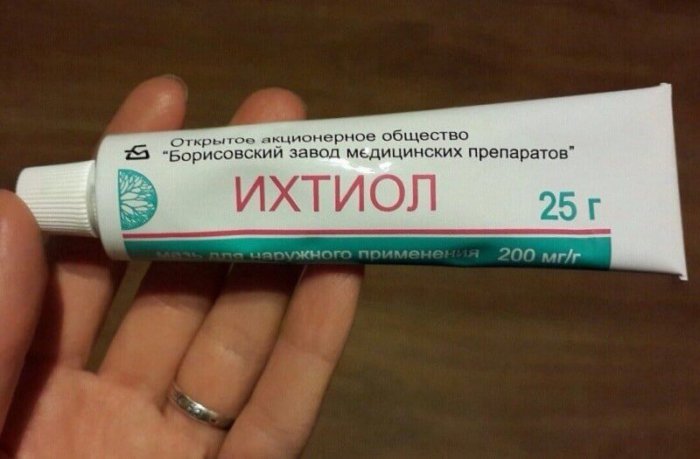
Ichthyol ointment
- Bandages are applied to the affected area using ichthyol ointment and alcohol.
- Assign injections with antibiotics and novocaine intravenously.
- The site of infection is treated with a solution of glorhexidine and furacilin.
With the spread of infection on a large scale and the occurrence of purulent bags, surgical intervention is recommended. The swollen area is opened with a scalpel just above the site of pus localization, without waiting for spontaneous fluctuation. Necrotic tissues are subject to excision.
Further therapy for corolla phlegmon is aimed at decontaminating the wound and improving the general condition of the cow. The hoof of the animal is abundantly irrigated with hydrogen peroxide, then dried, sprinkled with oxytetracycline in combination with sulfadimezin. For the treatment of wounds also use:
- Streptocide;
- Iodopharm;
- Boric acid.
In the absence of signs of deterioration in the health of the cow, the bandage is not removed for 4-5 days. If the animal does not improve, its appetite does not improve, and lameness increases, it is necessary to remove the bandage and examine the wound. Perhaps a re-opening is required.
Along with these measures, antibiotic therapy is carried out. Most often, penicillin is used in combination with novocaine to treat corolla phlegmon. Injections are administered intravenously, and they also carry out a circular blockade. The veterinarian injects drugs just above the site of inflammation to speed up recovery. The blockade is recommended to be done at intervals of 2-3 days.
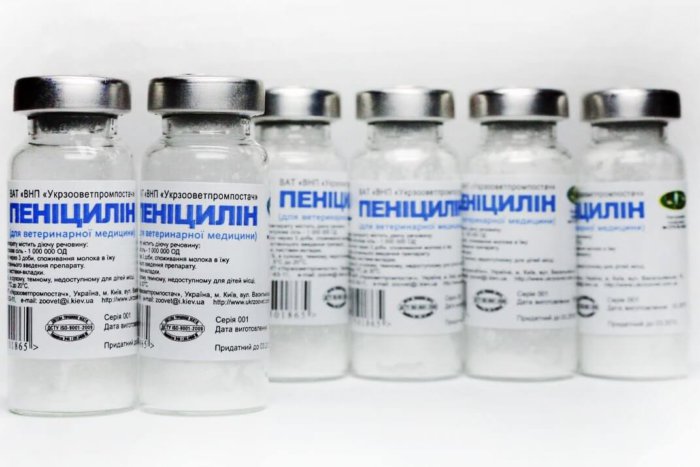
Пенициллин
Interdigital blockade is considered less complex and painless. For its implementation, the same drugs are used – an antibiotic of the penicillin series and novocaine. In this case, the drug is injected into the tissues of the fiber located above the arch of the interhoof gap. Antibiotic treatment is continued for at least 5 days.
Attention! The use of antibacterial agents is not a basis for refusing to open a purulent focus.
Prevention
Since the phlegmon of the corolla in cows develops mainly due to violations of the integrity of the tissue fiber, it is recommended as a preventive measure:
- Periodically examine the hooves of animals for injuries, swelling, cuts, punctures and abrasions.
- Keep the cow and her limbs clean.
- Do not allow walking in wetlands, where there is a high probability of injury.
Reference. In animals with strong immunity, purulent processes rarely develop. Therefore, as a prevention of corolla phlegmon, veterinarians advise improving the diet of cows by regularly including vitamin supplements in it.
Corolla phlegmon is a dangerous disease that cannot be ignored. In advanced cases, it can lead to necrosis of adjacent tissues and blood poisoning. If any damage to the hoof is found, all measures must be taken to prevent the spread of infection.
